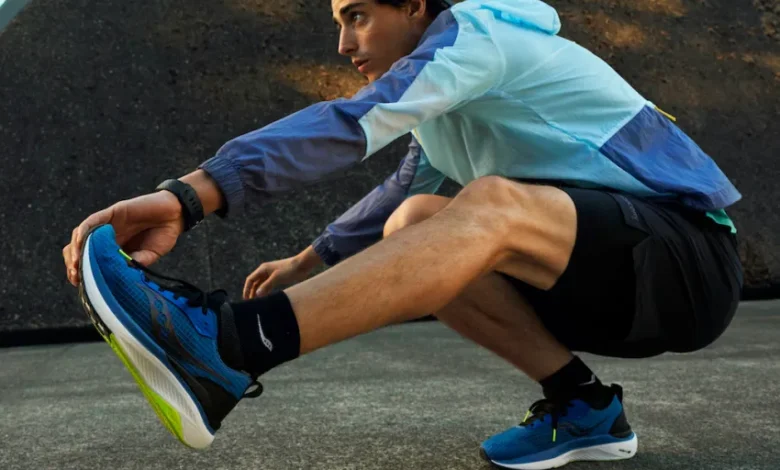Sneakers: The Science Behind Footwear Comfort and Performance

Introduction to Sneakers and Their Importance
Sneakers have evolved beyond casual footwear; they now play a vital role in fashion and functionality. Whether you’re going for a morning jog or a casual stroll, the right sneakers can significantly enhance your experience. Today’s consumer is entering a world where sneaker choice can influence comfort, efficiency, and overall health. Retailers like Foot Locker offer an extensive array of choices that utilize the latest technologies to meet the varying needs of consumers. This variety allows individuals to choose sneakers tailored to their specific requirements, ensuring the best fit and performance for any activity.
Understanding the mechanics and the inventive aspects behind sneaker design leads to more informed purchases. Comfort, durability, and functionality are central to making the perfect choice when selecting a pair. Consequently, appreciating the science behind sneaker construction can significantly impact how effectively these shoes serve their purpose.
The Anatomy of a Sneaker
Diving deeper into the anatomy of a sneaker reveals just how intricate these shoes are. The sole, typically crafted from rubber or synthetic variants, serves multiple functions: it provides cushioning, manages shock absorption, and facilitates grip — ensuring that each step is secure and comfortable. The upper portion, often constructed from breathable materials such as mesh, knit, or leather, contributes to the overall fit and air circulation, which is essential in keeping feet cool and preventing blisters. For additional comfort, the insole and midsole incorporate various technologies, such as gel or foam padding, which cater to the unique contours of each foot.
Each component of a sneaker is thoughtfully designed to solve specific challenges. For instance, the lacing system and tongue are not merely aesthetic but are integral in securing the foot snugly in place, offering a customized fit. This meticulous detailing collectively enriches the sneaker-wearing experience by addressing support and style.
Innovations in Sneaker Technologies
The realm of sneaker technology has witnessed exhilarating advancements poised to transform how these shoes function. Innovations such as energy-return soles and adaptive cushioning systems are engineered to respond dynamically to movement, boosting efficiency and reducing fatigue. These technologies are particularly advantageous in high-performance settings where athletes demand increased support during rapid or repetitive movements.
Moreover, the infusion of intelligent technology in sneaker designs has emerged. Features such as sensors that track gait and posture add a new dimension to personalized footwear solutions, aiming for comfort and precision in optimizing athletic performance. As these innovations become increasingly accessible, they pave the way for sneakers to be not just about footwear but about interactive fitness tools.
The Role of Materials in Comfort
Materials employed in sneaker manufacturing play a pivotal role in determining comfort. High-performance fabrics like mesh and engineered knit provide the necessary ventilation to prevent overheating, enhancing comfort over prolonged wear. Meanwhile, leather and synthetic alternatives offer durability and water resistance, making them suitable for environmental conditions.
The choice of midsole and outsole materials, such as EVA foam, polyurethane, or gel inserts, influences the cushioning and bounce-back quality that directly impact how sneakers feel on the feet. Each material has unique properties that impact weight, flexibility, and shock absorption, thus tailoring the overall feel and performance of the sneaker.
How Design Affects Performance
Sneaker design profoundly impacts performance, with specific elements tailored to support different activities. For runners, sneakers boasting a forward-facing design, often characterized by a higher heel-to-toe drop and responsive cushioning, facilitate better momentum and cushioning on impact. On the other hand, basketball shoes with heightened ankle support and enhanced grip are vital for quick directional changes on the court. These nuanced designs are integral in maximizing comfort and performance explicitly tailored to the demands of each activity.
A well-designed sneaker improves performance and aids in injury prevention by supporting foot stability and reducing joint stress. This fusion of comfort and functionality underscores the importance of selecting the right sneaker design to match one’s activity level and foot physiology.
Choosing the Right Sneakers for Different Activities
Understanding the specific needs of various activities is paramount when choosing sneakers. Running requires shoes with adequate shock absorption and slight flexibility, while cross-training shoes lean towards stability with minimal cushioning to support multi-directional movements. Walking shoes, in contrast, prioritize comfort and cushioning tailored to repetitive heel-to-toe motion.
This specificity in design necessitates that individuals assess their specific usage scenarios and select sneakers that complement the nuances of their routines. This careful selection not only enhances performance but also extends the life of the sneaker and the health of the wearer’s feet.
Sustainability in the Sneaker Industry
Sustainability within the sneaker industry is gaining momentum, reflecting a broader global consciousness towards environmental stewardship. Brands are experimenting with recycled materials and sustainable manufacturing processes to reduce their ecological footprint. Initiatives like using plant-based materials and reducing water usage in production underline a commitment to eco-friendly practices without compromising on quality or durability.
This shift matters for the environment and appeals to a growing segment of consumers who prioritize environmentally responsible choices. The sustainable sneaker movement represents a pivotal step towards reconciling performance style with ethical production, setting a significant precedent for the future of footwear manufacturing.
Future Trends in Sneaker Design and Technology
The future of sneaker design and technology is poised for even more significant innovations to redefine what consumers expect from footwear. Customization, powered by 3D printing and AI-driven design tools, promises an unparalleled level of personalization, molding sneakers to fit every foot contour perfectly.
Furthermore, intelligent sneakers with built-in digital technology are on the horizon, capable of real-time tracking metrics like distance, steps, and even running techniques in real-time. These advancements enhance performance and offer valuable insights for health and fitness enthusiasts. As these trends become mainstream, they will likely redefine and elevate the function of sneakers from conventional footwear to intelligent, adaptive companions.
Keep an eye for more latest news & updates on GREAT BEND JOURNAL!



